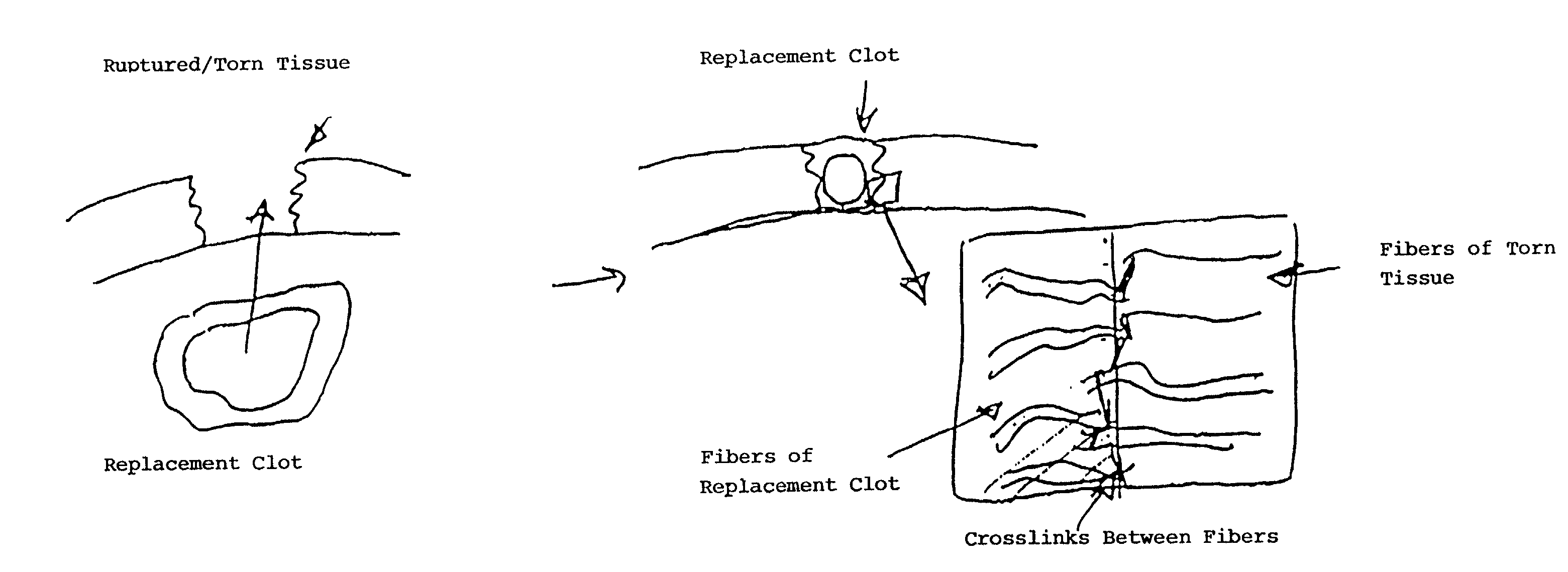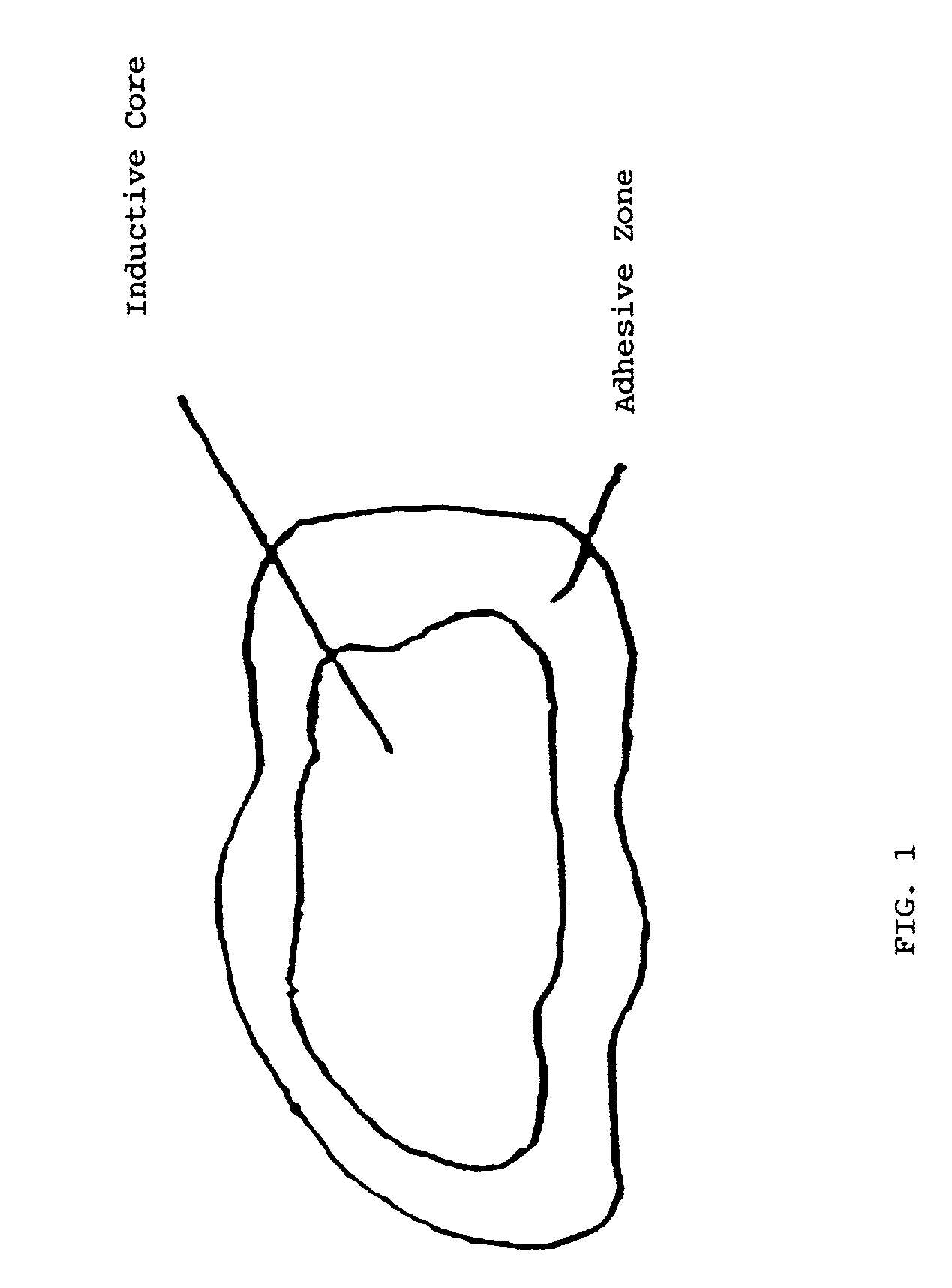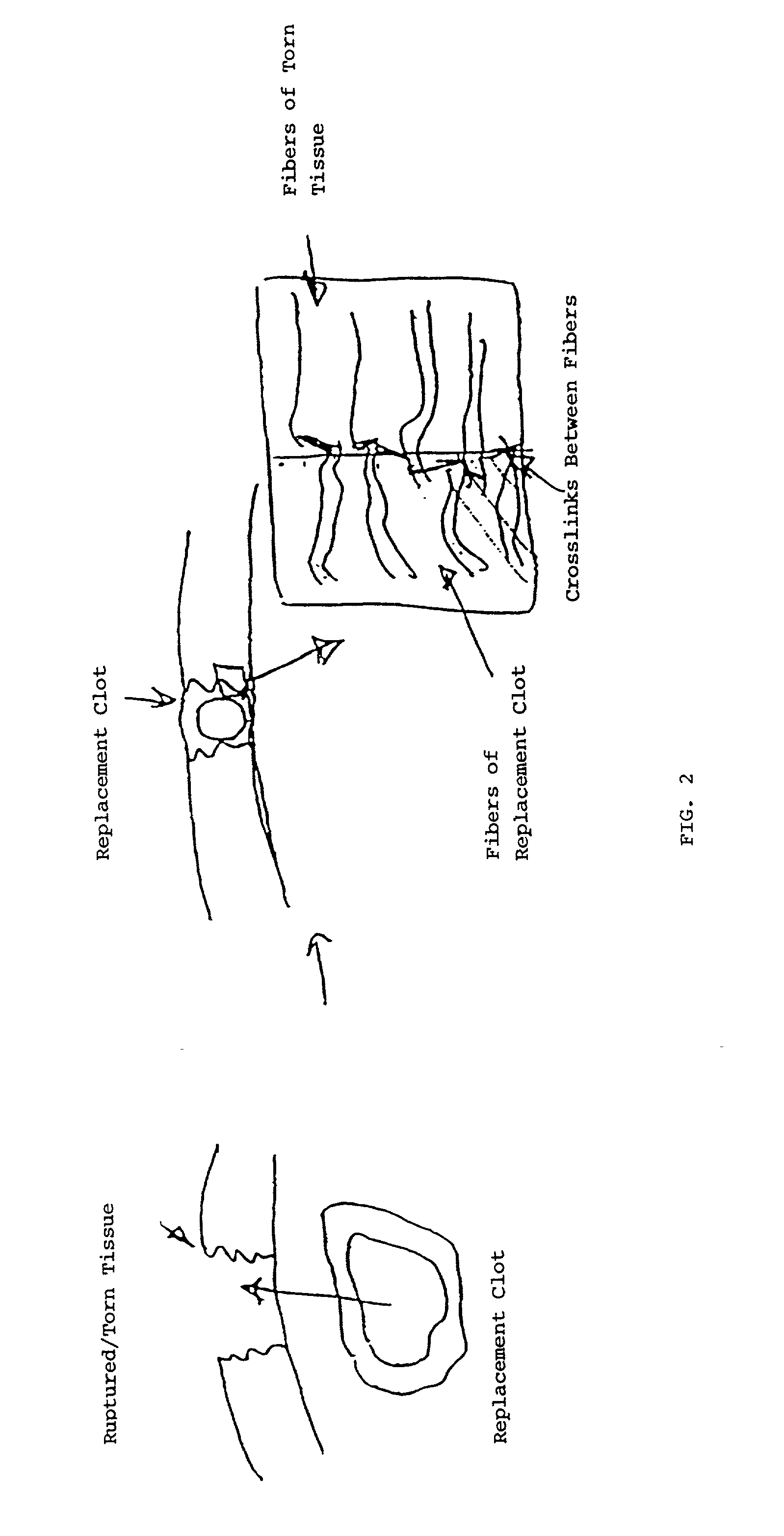Biologic replacement for fibrin clot
a technology of fibrin clot and biopsies, which is applied in the direction of prosthesis, peptide/protein ingredients, and ligaments, etc., can solve the problems of affecting the healing process of tissues within the joint or intra-articular tissues, premature degradation of fibrin clot scaffolds, and failure of meniscus and articular cartilage in human joints to heal after an injury, etc., to promote the regeneration of human anterior cruciate ligaments, less invasive treatmen
- Summary
- Abstract
- Description
- Claims
- Application Information
AI Technical Summary
Benefits of technology
Problems solved by technology
Method used
Image
Examples
example 1
Fibroblast Distribution in the Anteromedial Bundle of the Human Anterior Cruciate Ligament
[0096] The purpose of this EXAMPLE is to confirm the presence of cells expressing a contractile actin isoform alpha-smooth muscle actin (.alpha.-sm; SMA), in the intact human anterior cruciate ligament, as shown by Murray & Spector, 17(1) J. Orthop. Res. 18-27 (1999). Actin is a major cytoskeletal protein associated with cell motility, secretion, phagocytosis, and cytokinesis. Actin is expressed in mammals as six isoforms which are coded by different genes and differ in their amino acid sequence. Two of the isoforms (.beta.and .gamma.) are found in practically all cells, while the other four (.alpha.'s) are thought to represent differentiation markers of muscle cells. The .alpha.-sm actin isoform is associated with the contractile phase of healing in several connective tissues, including dermis, cornea, tendon and medial collateral ligament. This isoform has also been associated with cell migra...
example 2
Fibroblast Migration into the Anteromedial Bundle of the Human Anterior Cruciate Ligament In Vitro
[0103] The purpose of this EXAMPLE was to confirm that human ligament fibroblasts can migrate into collagen-glycosaminoglycan copolymers in vitro.
[0104] Methods.
[0105] Fifteen intact anterior cruciate ligaments were obtained from total knee arthroplasty patients, ages 54 to 82 years. Four of the ligaments were used solely for histology and immunohistochemistry. The remaining ligaments were sectioned into fascicles that were divided transversely in the midsubstance to make explants. The highly porous collagen-glycosaminoglycan matrix, composed of type 1 bovine hide collagen and chondroitin-6-sulfate, was prepared by freeze-drying the collagen-glycosaminoglycan dispension as described by Murray & Spector, in 45.sup.th Annual Meeting, Orthopaedic Research Society, Anaheim, Calif. (1999). The average pore size of the collagen-glycosaminoglycan scaffold was 100 .mu.m. Sample of the collagen-...
example 3
The Migration of Human Anterior Cruciate Ligament Fibroblasts into Porous Collagen-Gag Matrices In Vitro
[0111] This EXAMPLE was designed to determine if fibroblasts intrinsic to the human anterior cruciate ligament were capable of migrating from their native extracellular matrix onto an adjacent provisional scaffold in vitro. Another objective was to determine whether any of the cells which successfully migrated into the scaffold expressed the contractile actin isoform, .alpha.-sm actin, associated with wound contraction in other tissues. This EXAMPLE demonstrates that the cells intrinsic to the human anterior cruciate ligament are able to migrate into a collagen-glycosaminoglycan scaffold, bridging a gap between transected fascicles in vitro.
[0112] Explants of human anterior cruciate ligament are useful as the source of cells for migration testing, because the explants provide a known distribution of cells within an extracellular matrix carrier. Thus, any cells which are found in t...
PUM
| Property | Measurement | Unit |
|---|---|---|
| pore size | aaaaa | aaaaa |
| distance | aaaaa | aaaaa |
| diameter | aaaaa | aaaaa |
Abstract
Description
Claims
Application Information
 Login to View More
Login to View More - R&D
- Intellectual Property
- Life Sciences
- Materials
- Tech Scout
- Unparalleled Data Quality
- Higher Quality Content
- 60% Fewer Hallucinations
Browse by: Latest US Patents, China's latest patents, Technical Efficacy Thesaurus, Application Domain, Technology Topic, Popular Technical Reports.
© 2025 PatSnap. All rights reserved.Legal|Privacy policy|Modern Slavery Act Transparency Statement|Sitemap|About US| Contact US: help@patsnap.com



